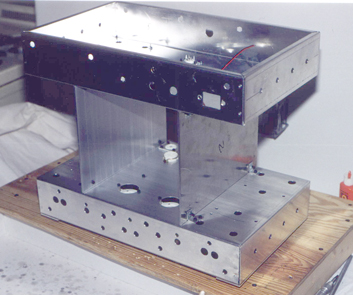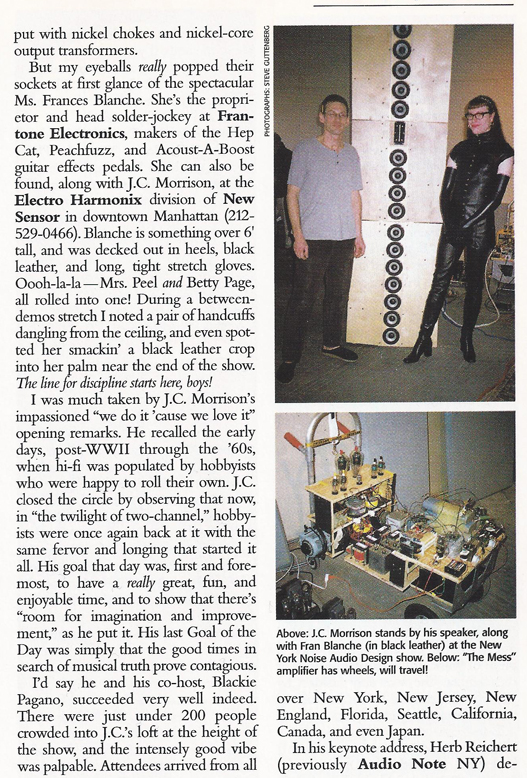Of
Human Design
(Nov. 2010)
Virtually everything in the
human world is designed and manufactured by someone. It is an environment
so pervasive that rarely would any person think for a second that right
now, as you read this on your computer, that there is nothing within your
reach or perhaps even within your sight that is not man-made. The
chair you sit on, the fabric on its seat, the fibers in that fabric, the
carpet it rests on, the floor and walls that surround you, the paint on
those walls, the building the room is in, everything within that building,
and even the neighborhood and country that building resides in, all are
designed, manufactured and constructed by people. We get out of bed,
go to the bathroom, put on our clothes, eat in our kitchens, leave our
houses and apartments, walk down paths to get into our cars, drive on roads
to our daily destinations, and go through our manufactured days in our
manufactured world. The sea of constructed things and situations
that we swim in truly overwhelms our intrinsic humanity, and as people
we buy into the belief that our ‘reality’ is truth, when in fact we have
invented it all.
I have said for years that
the biological animal is a human being. Place the human being into
society, which is an artificial construct, and it becomes a person.
I say ‘pervasive’ because society really does alter the human being into
something else, something valuable and useful to the society. From
cradle to the grave we each are made to play a part, whether we like it
or not. In tribal times our social roles were simple. We were
hunter-gathers then, nomads who stayed mobile and followed the food and
weather. As we got more creative and began to manipulate our surroundings
more we became more invested in our camps, and started finding ways to
settle down in one place and build on what we made. Social structure
and interdependence on a larger scale became necessary as our needs also
grew – needs for reliable grain crops for beer and bread, and shelter and
security for our growing populations.
From the time of the earliest
Egyptian writings it was all sewn up. People were just as smart,
creative, and resourceful back then as they are today, and the people of
those ages invented the world we still live in. Human social order,
and in truth most of the things, structures, tools, and rituals that it
depends on, were all invented and established, and have really not changed
all that much since. In 1500BC a door was a door, stairs were
stairs, pen and paper were for writing, math was for accounting and designing,
boats were for sailing, textiles were for clothing, clothes were for wearing,
make-up was for beauty, art was for admiring, beer was for drinking, medicine
was for curing (yes they actually had some competent medicine then), jewelry
was for adorning, cats were for cuddling, and the homes and neighborhoods
of Cairo would have made any modern traveler feel at home.
The reasons for society’s
existence was the same then as it is now, and the human role in those social
orders was just as crucial. The idea is to make the attractors and
trappings of society outweigh the costs of participation, even if just
slightly. I have made the analogy long ago that negotiation is usually
a matter of approaching the discussion with a bat in one hand and a bar
of chocolate in the other, and often using a little of both.
That is what society does to us as well. Being born and raised within
its framework makes defection unlikely, as most people grow up to truly
believe in their lives and the social order as solid and an inalterable
reality.
We believe in abstractions
such as money, power, and popularity – all interchangeable currencies -
as the ultimate pursuits of our existence. Money is a clever human
invention, and very necessary for control of everyone in the system.
Without it, you starve, you freeze, you fail, and you die. Certainly
makes it hard to argue that it is not even real. Money is today the
single most arbitrary and contrived concept that humans have ever invented.
Because of this it is also the most unstable part of the fabric of society
worldwide. The rules of exactly what money is have changed over the
centuries. Today it is primarily defined as acquired debt; the loans
and obligations of the world’s population balanced against what it spends.
Unfortunately, ever since the debt standard was established it was always
clear to the accountants that invented it that there was a definite point
of no return for that system, but they set it up that way anyway because
it promised unheard of wealth for those that invent the system. A
system made to be impossible from the start for relatively short term gain.
This is the crux of all human social order, the inherent greed of people
who control it, and the protection of their interests first and foremost.
The key is to have that balance I had mentioned before, to make the attractors
outweigh the costs for those who must bear the burdens, and so in the modern
age there must be ever more attractions to offset the growing problems.
These again must be invented, designed, and marketed by people, and popular
enough to generate profit and be sustaining. At least for a time,
until the next and newest distraction can replace it, and the cycle can
perpetuate.
Today this is what our society
is all about. On the human level it has become the endless
and often mindless pursuit of distractions and the acquiring and consumption
of things. All the more need for those things to constantly be invented,
like the ever expanding internet, and the tools of social networking.
Because of modern social networking, people today feel more connected than
ever, yet as individuals we are more isolated and as a society our relationships
are more distant and superficial than at any other time in history.
Quantity it seems well outweighs quality for most, and this feeling of
being on the veritable pulse of goings on is just a new appealing shroud
over the real structure of society. Feed them cake, as it was once
said.
The point of this essay is
that it is important not to forget where you really stand in the world.
Not that you can change it much, but you can a little. Not that you
can do without it much, but you could a little. And perhaps this
gentle nudging of things into a more human direction is all we as people
can do for ourselves. Turn off your Blackberry and pick up
a book. Turn off your texting and visit a friend. Forget tweeting
for a moment and call your Mom.
It would not take too much
to move society into a more truly connected world, whether we invent it
or inherit it. Either way, ours is a world that our predecessors
made for a purpose, and we are the constant and ever-changing end result
of that design. In that role, we are at the helm, and we have more
power in that capacity than we are supposed to believe. We all have
free will, and believe it or not, like it or not, we all have choices,
and we all make decisions every day that determine our lives. If
you are careful and selective, you can move your life in great ways, and
move others along with you by your example. That is the daily challenge
that we all face, in this completely artificial, made-up place we call
home, built upon this amazing natural spaceship called Earth, floating
in an outer spiral arm of the great Milky Way galaxy. If you want
to keep perspective, all you have to do is go outside and look up.
That is our universe, and we belong to it. It is so important to
never lose sight of that fact. Out there is where reality truly is.














